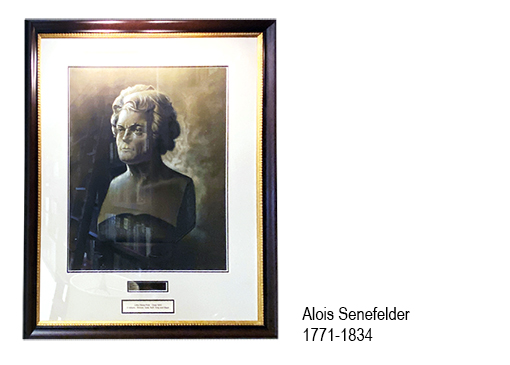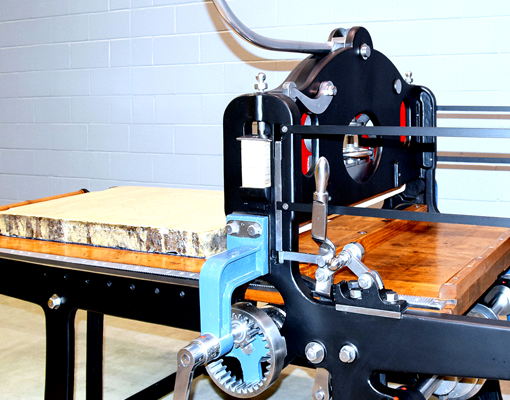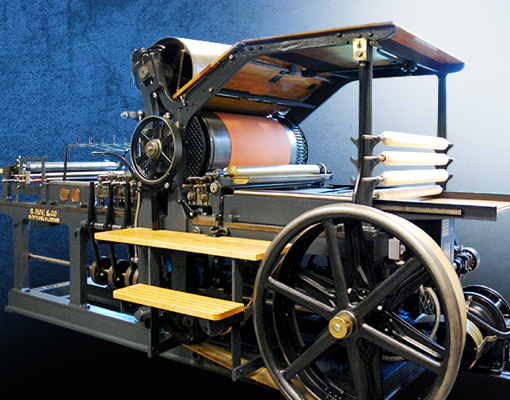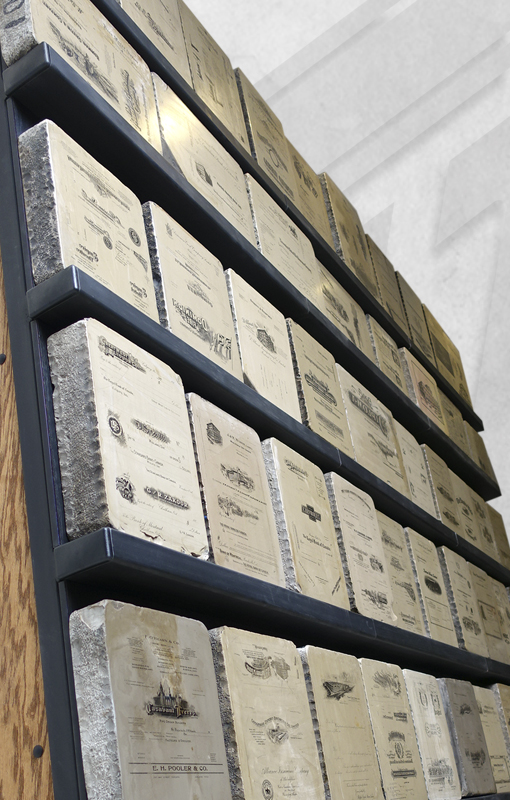Alois Senefelder, a German born in Prague, first came upon drawing images onto a smooth polished limestone. The concept is based on the theory that oil or grease does not mix with water. This simple stroke of genius brought credit to Senefelder as the inventor of Lithography. After patenting his invention in 1818, the world was introduced to more intricate detail and real colour. For the first time, there was a process to re-create fine artworks.

As we know today, Lithography erupted, and by the 1950s, it surmounted Letterpress, virtually capturing all of the printing market. Only since 1995 has the “Offset Lithography” process had any competition - so powerful was Senefelder’s discovery.
The HIW has several examples of this method: by hand press (Krause) and rotary metal decorating press, R. Hoe. The limestone in our collection provides a glimpse into the early days of the lithographic stone period.
GO TO THE GALLERY »


